One of my biggest tasks this summer has been the renovation of the front garden. Bed by bed, I’ve been planning and ripping out aged plants and weeds and planting. Some plantings have been successful, a few not so much. but that’s how it works with gardening. I thought I’d go through the various beds and show how they’re shaping up.
The shady north corner of the house is the first bed that I put together, way back in April. When we bought the place, this bed was stuffed to overflowing with a mature Leyland cypress that had not been trimmed for years. It was way too big, way too tall. Leylands tend to have shallow root systems, so I feared that a good gale would send it toppling over. They’re pretty trees for a big wide open field, but just sooo inappropriate for a tiny front garden. I thought we’d trim it at least, and then see later what to do. I sent TheHighPriest out, armed with a power hedge clipper, and after one careless slip of the blade, there was a huge vertical gash in the crown of the tree. “It’ll grow back, it’s just a tree!” Well, no, actually it won’t, since you cut the green parts of the branches completely off. And thus the poor thing was doomed.
We grit our teeth and cut it down – it pains me to chop down trees! We mulched the branches, cut the stem for firewood. Then, I set about removing the stump using a pair of secateurs, a spoon, and a hose. It worked, took a bunch of effort and hand strength. Damned thing got its revenge on me though, since I’m pretty sure this triggered the carpal tunnel issues I’ve been struggling with this summer.
Now, what to plant? I actually quite liked the basic idea of the Leyland, with its tall architectural accent in that spot. I wanted something evergreen with a similar shape. I recall admiring the stand of yew trees near work in Vienna, so we settled on an Irish Yew (taxus baccata fastigiata). Yews are the only needle trees (that I know of) that grow back no matter where you cut, so the chance of a repeat of the gash story is slim. Their needles have such a lovely deep dark green color and are very soft to the touch, and the red arils are very decorative in the fall. There’s that famous little problem that all parts of the plant are very toxic, but if you look around, the same is true of many of the other plants that are popular in gardens (like delphiniums, datura, etc.). The Irish yew (fastigiata) grows in a columnar shape and will keep that cigar shape without pruning. In addition, it’s a favorite tree for churchyards in Britain and Ireland. What could be more appropriate?
Since this spot is shady, will be even more so as the yew grows, the choice of appropriate plants is a bit limited to those that thrive in shade. In front of our little yew, I put a couple of “White Feathers” Hostas which sprout pure white leaves in spring. These turn green as the season progresses. Between them is a “Whirlwind” Hosta with variegated cream and dark green leaves. The deep green of the yew needles should set these off nicely.
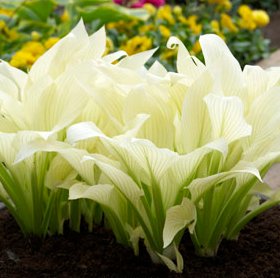
What the plant catalog promised the "White Feathers" hosta would look like when it sprouts. I didn't get a picture of ours when it was newly sprouted, but this is pretty accurate.
In front of this I planned a sweep of Japanese Painted Ferns (Athyrium niponicum ‘Pictum’). Two of the ones I ordered arrived, but the rest were cancelled by the plant mail order company and replaced with random red peonies I did not order, with no word of warning. (But, hey, free peonies!) The company, Baldur, has a reputation for being a bit chaotic, and I wouldn’t recommend them, even though they have some plants that no one else seems to carry. I’ll try to get more ferns next season from someone else, if I can find a different supplier. The two that did arrive sprout green fronds which turn silvery white as the season progresses, adding a nice time-contrast with the hostas.
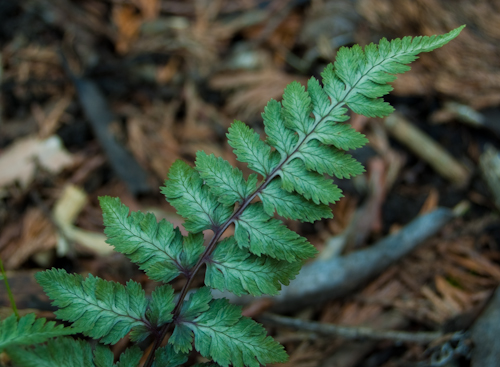
My Japanese Painted Fern, in late July. They're progressing to silver, and are awfully pretty, if not as showy as some of the other plants.
At the ends of the fern row, I put in two Fushia “Blue Sarah” – at least that’s what the catalogue called them. I think in most other sources call the variety is “Delta’s Blue”. The catalogue pictured them as white, with a blue bell. In my garden, the bell is magenta. I added a little wood ash to their fertilizer to raise the ph, and that sent them producing more purple bells. I guess this variety is ph sensitive. It’s quite pretty, but I’m not sure the catalog color can be achieved no matter the ph of the soil.
Finally, in the very front, I put in a few bulbs of cyclamen purpuracens, which is meant to be a scented variety. These are juuust now poking their little leaves above the soil. Around them, I put in a swathe of cyclamen persicum “Patio” in varying shades of pink.
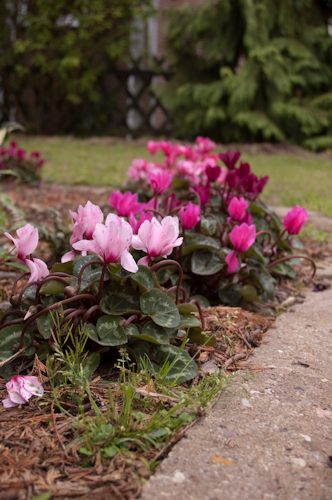
Cyclamen in various shades of pink. Next time, I'll weed first, then take photos, not the other way around...
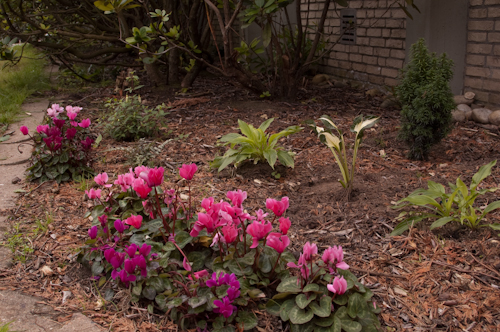
Cyclamen in the foreground. In the back, a rapidly growing Fushia, a japanese fern, hosta "White Feathers", hosta "Whirlwind".
© 2011 – 2012, Converting a Church. All rights reserved.
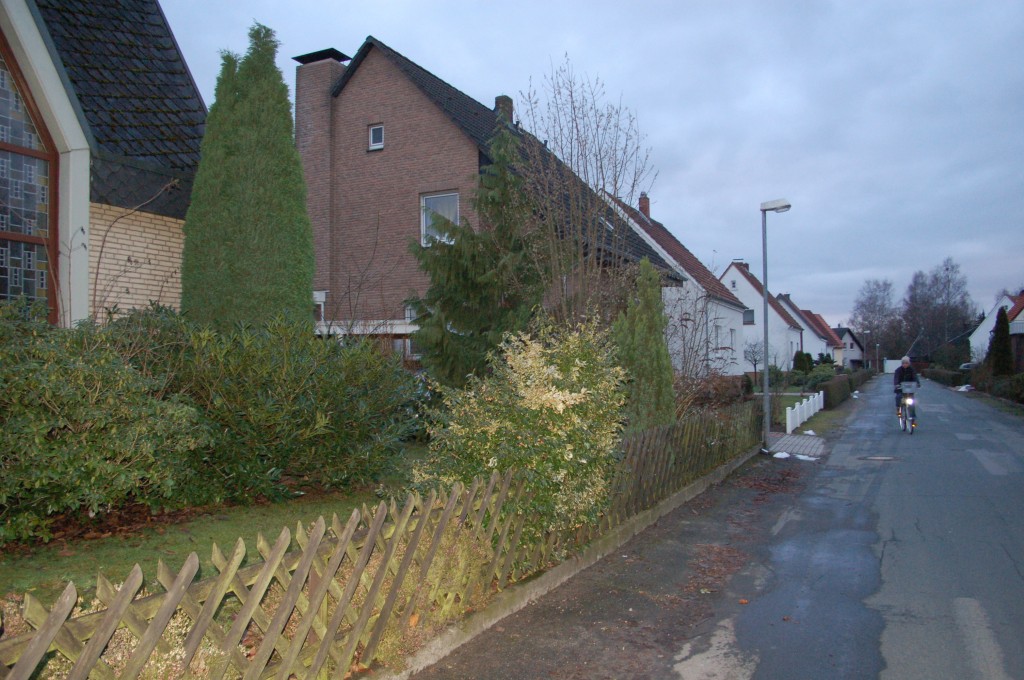
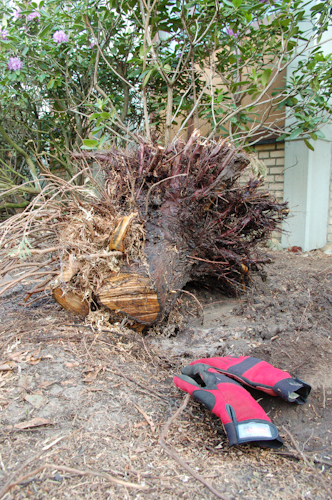
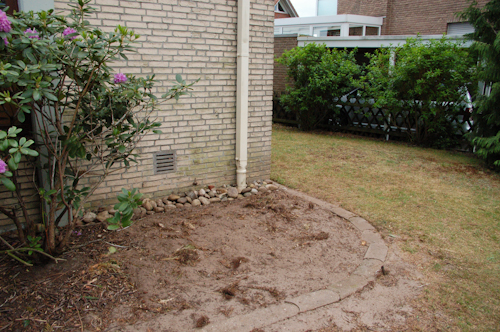
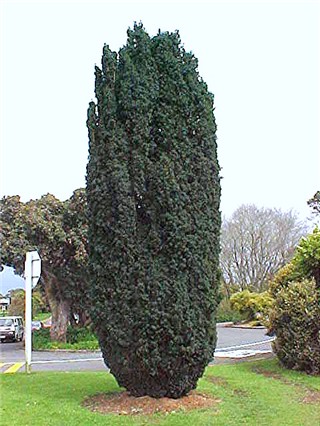
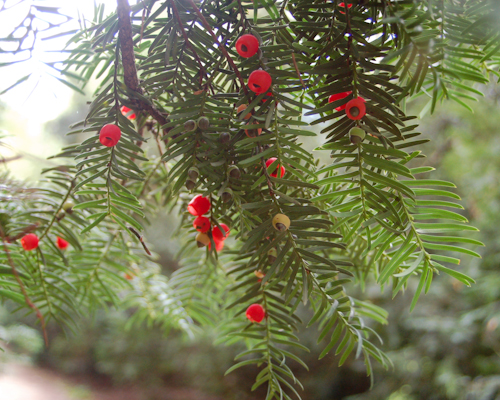
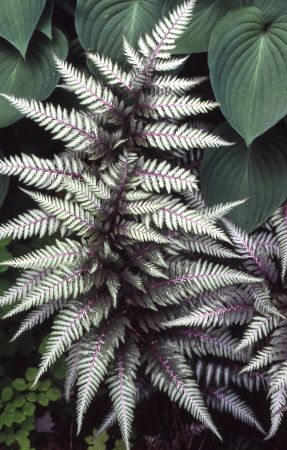
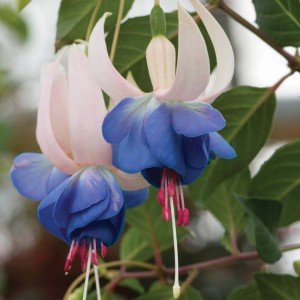
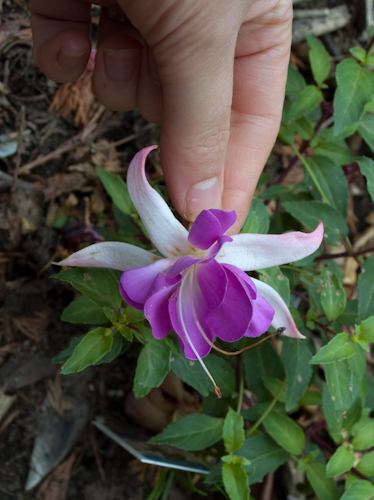
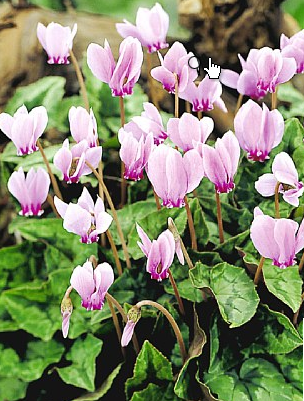
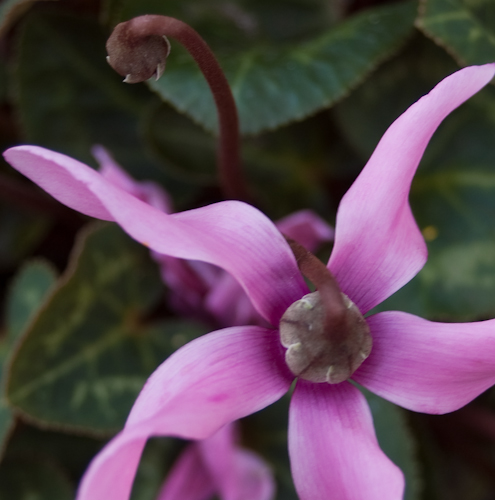
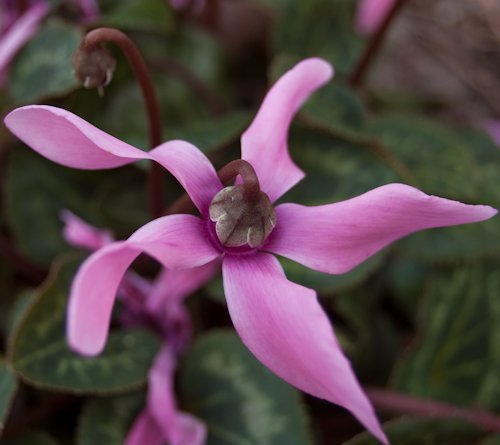
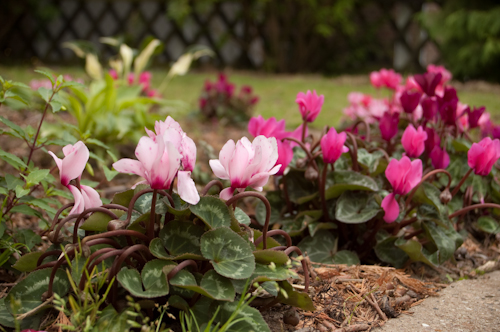
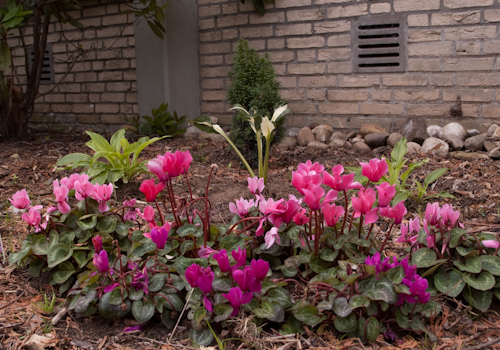
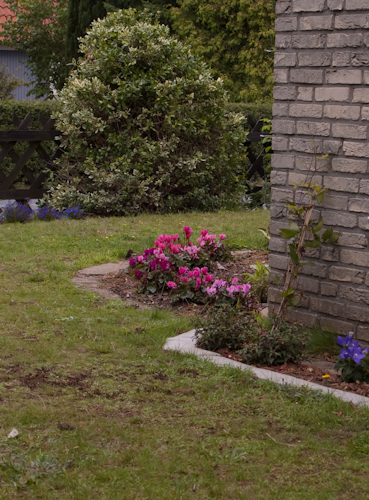
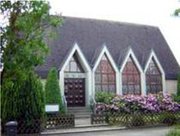
1 comment
Orry Kirby says:
December 2, 2013 at 05:58 (UTC 1 )
Love the white feather hosta’s.